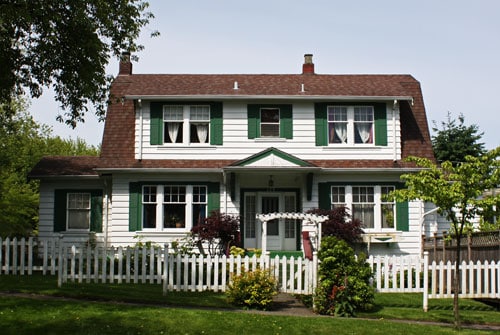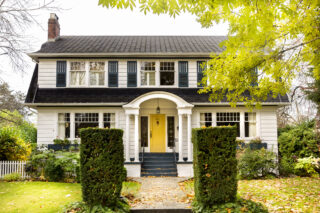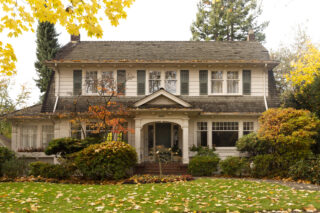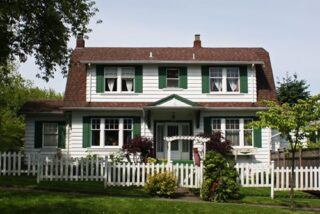Earlier Dutch Colonial Revivals usually had lap siding, a trait that still characterizes many homes of this style. In the thirties, roughcast stucco was more popular. Many have shutters, either ornamental or functional, emphasizing their windows. Green for trim, shutters, windows and doors was the most popular colour choice along with white siding. Some more upscale examples had foundations of concrete with a brick veneer.
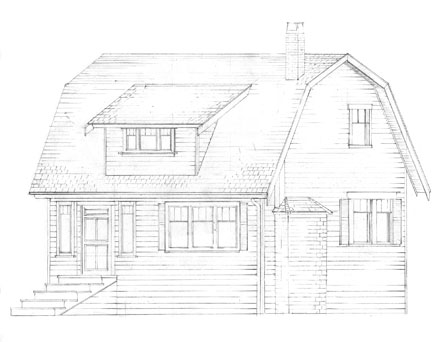
Click on the diagram or expand the term index to learn more about the features.
Cladding
Also referred to as siding, cladding is the outermost layer of the wall system, providing resistance to the natural elements and acting as a control device for drainage. Depending on the house style, various kinds of stucco, horizontal and vertical boards may be used as cladding. Types of cladding/siding: Board and Batten Clapboard Drop Lap Masonry Shakes Shingle Shiplap Stucco
Eaves
The lower edge of a roof that projects beyond the face of a wall.
Gambrel Roof
A ridged roof having two slopes on each side where the lower slope is steeper than the upper (also called a “barn” roof).
Shed Dormer
A dormer with a single plane sloping roof.
Form
Dutch Colonial Revival buildings are symmetrical 2-storey houses, set near ground level, with double-pitched gambrel (“barn”) roofs almost always with side gables. Usually, a full-width shed-roof dormer occupies the front elevation. The front door is usually centered, often with a fanlight above. Windows are usually double-hung with shutters and often set in pairs or triples. Chimneys were set on the side wall. The cladding is usually horizontal lap siding, occasionally roughcast stucco.
Background
Early 18th century Dutch and Huguenot settlements in the Hudson River Valley area inspired Dutch Colonial Revival architecture. The style shares similarities with the Georgian Revival popular in the same period, with symmetrical bays of windows and a centered front door. Like other colonial revival styles, Dutch Colonial Revival first reappeared after the American Centennial in 1876. It became more common in the interwar period (between WWI and WWII) as kit patterns in mail order catalogues made the style more accessible. It was one of the most popular designs of this era. The gambrel roof with its full second storey of space made the Dutch Colonial Revival house a practical choice for families. It is still a common style found in interwar suburbs.
Details
- Gambrel roof (Barn roof)
- One storey with steeply pitched gambrel making a full second storey
- Either separate dormers or continuous shed dormer
- Central entrance
- Windows usually double-hung with shutters, set in pairs or triples
- Small pane windows
- Horizontal lap siding
- Side wall chimney
